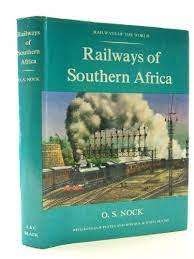
`RAILWAYS OF SOUTHERN AFRICA` BY OS NOCK, FIRST EDITION
Check my rate
| Main centres: | 1-3 business days |
| Regional areas: | 3-4 business days |
| Remote areas: | 3-5 business days |

| Main centres: | 1-3 business days |
| Regional areas: | 3-4 business days |
| Remote areas: | 3-5 business days |
"RAILWAYS OF SOUTHERN AFRICA" BY OS NOCK, FIRST EDITION, 1971, HARDCOVER IN VERY GOOD CONDITION, 243 PAGES
In studying the railways of any country, one cannot go very far without clipping into history. There will be peculiarities of equipment-design or track layout that cannot be explained by an ex-amination of the situation as it exists today. In Southern Africa however the history of railways is to a remarkable extent the history of the sub-continent itself. Only in Cape Province does the history of the country extend back to more than a century before the coming of railways, and history in all the countries of Southern Africa is dramatic and compelling to the last degree. Nevertheless the very wonder and facility of modern world communications can tend to make a present-day traveler's exploration of the railways of Southern Africa a process in reverse, and in so doing to lose something of the immense significance of pioneer railway development. The establishment of railway communication in Southern Africa can be likened, on a gigantic scale, to the policy adopted by those who built railways through the Highlands of Scotland. Here was no case of making rapid communication such as Brunel set out to do between London and Bristol, or Robert Stephenson did between London and Birmingham. In Southern Africa, as in the Highlands, the task was to secure some form of railways. However slow it might be in comparison with the railways already operating in other parts of the world, any journey by rail would be an immeasurable improvement upon the hazards, privations, and outright dangers of travelling the uncharted tracks of Africa by horse-drawn vehicles.
